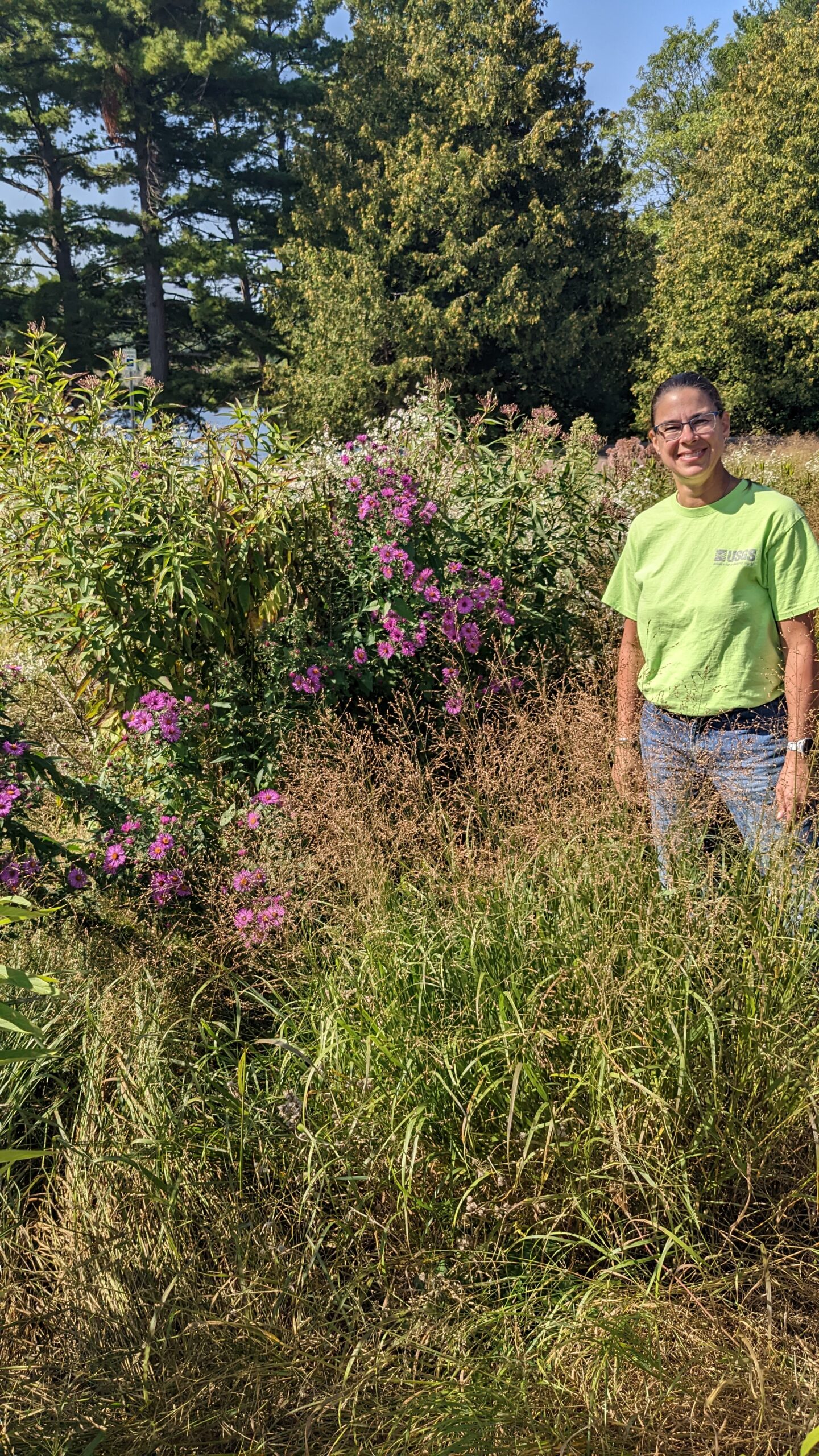
The Hancock Beach bioswale, maintained in part by the Keweenaw Wild Ones, appears to be doing a great job keeping pollution out of Portage Lake, according to a recent test conducted by the U.S. Geological Survey.
Completed in 2011, this island of vegetation was built by the City of Hancock to capture runoff from the parking lot and prevent it from polluting Portage Lake. It is a key part of the $244,000 Hancock Beach Stormwater Improvements project, designed by Hancock firm OHM and funded by the Great Lakes Restoration Initiative (GLRC).
About the test
Sherry L. Martin, a physical scientist with the USGS, visited the site Sept. 12 to determine how well the bioswale would absorb stormwater during a downpour. Using a saturated hydraulic conductivity test, she measured how quickly water ran into the soil. The faster water sinks into the ground, the less likely surface pollutants from the parking lot will end up in the lake during rainstorms.
She was surprised by the results.
“It was very fast,” said Martin, “outside the maximum range of our instrument. If you want high infiltration here, you’ve got it.”
The city and the designers clearly wanted something that would serve its purpose well. [The bioswale is] both esthetically pleasing and practically functional.
Sherry Martin, USGS physical scientist
Martin gave the city high marks. “This is a nice-sized bioswale for the parking area,” she said. “It shows commitment. The city and the designers clearly wanted something that would serve its purpose well. It’s both esthetically pleasing and practically functional.”
Volunteers and the bioswale
With funding from the City of Hancock, the Keweenaw Wild Ones and the Hancock Beautification Group have been working on the bioswale for several years, removing invasive exotic plants and replacing them with deep-rooted natives that channel water into the earth. The aims have been to improve filtration, provide wildlife habitat, and enhance the bioswale’s appearance.
The big picture
Martin visited four similar sites in the Upper Peninsula Sept. 12-13, including projects in Lake Linden, Marquette, and Sault Ste. Marie. The visits are part of a larger, Great Lakes basin-wide USGS project to measure the progress of green infrastructure implementation and operation at sites funded by the Great Lakes Restoration Initiative.

